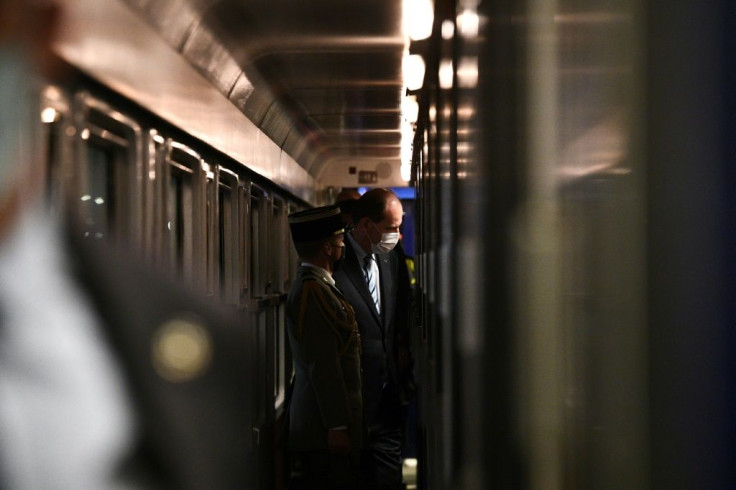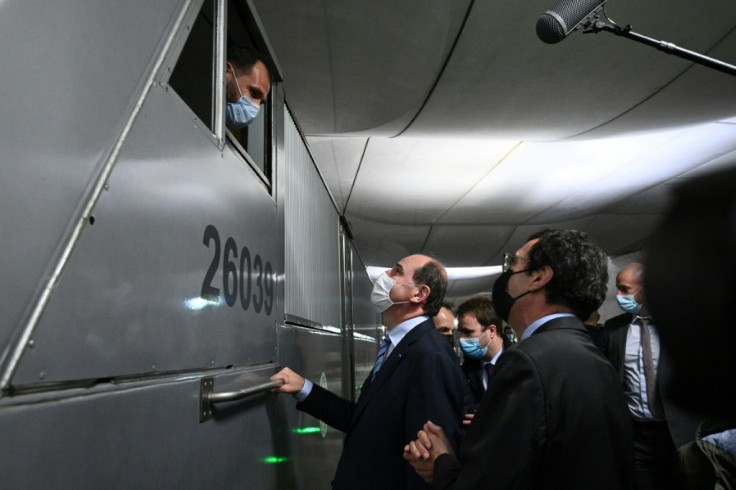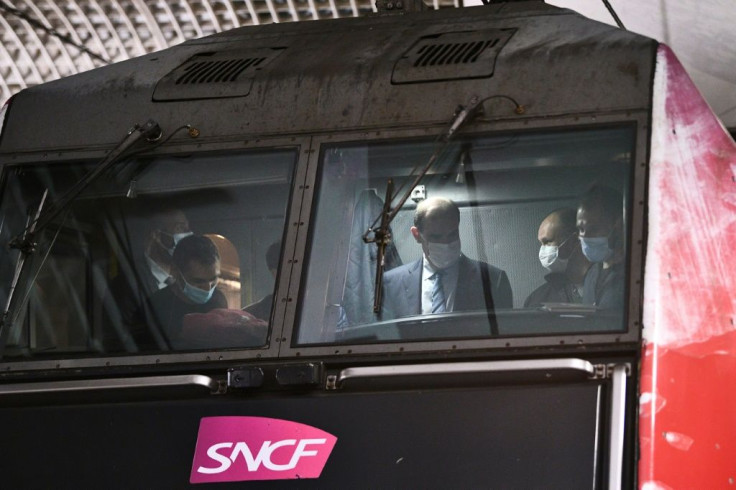All Aboard The Night Train: Paris-Nice Sleeper Returns
The legendary sleeper train that whisked travellers through France to the Mediterranean for close to a century has returned to the tracks as part of a French government push to revive night train travel.
Prime Minister Jean Castex was among the passengers rocked to sleep as the resurrected Paris-Nice express rattled across the country on a 12-hour journey to the sea overnight Thursday to Friday, with six stops along the Riviera.
The rehabilitation of the successor to the Blue Train that beat the Orient Express for glamour in the heyday of European rail travel in the early 1900s marks a turning point in the country that pioneered high-speed TGV rail travel.
The sleeper, which will run daily between Paris and Nice in both directions, takes twice as long as the TGV to complete the nearly 1,088-kilometre (675-mile) voyage.

But with Paris-Nice TGV tickets usually costing well over 100 euros ($122) one-way, the night train, which offers a place in a sleeping couchette from 29 euros ($35), aims to make cross-country rail travel affordable for all.
The Paris-Nice train had been discontinued four years ago for cost reasons.
At a time when France is struggling to bring down its carbon emissions, night trains are also more "virtuous" than cars or planes, as Castex's office told AFP.

Passenger Eric Delasimone, a financial director travelling onboard, said he felt in the night train "a charm that you do not have in the TGV."
"You settle in and sleep with the noise of the rails; and imagine the journey. It has a side that is poetic and very exotic."
Travellers Nicolas Forien and Alice Billon, who are part of an association "Oui au train de nuit" (Yes to night trains), said they were delighted to be on the train but hoped in the future that trains would be better equipped.

"We are a little disappointed that the carriages have not been renovated," said Billon.
The Blue Train, so-called after its blue sleeping cars with gold trim, was launched in 1886 to take the international jet set to the French Riviera from the northern port of Calais -- where it set out with passengers arriving by ferry from Britain -- and Paris.
The main destination was the city of Nice, a favourite haunt of wealthy American and British travellers, who were treated to five-course haute-cuisine dinners en route, before slipping between the sheets in an oak-panelled sleeping car complete with personal attendant.
By the 1930s, second- and third-class carriages had been added for working-class French travellers taking their first paid holidays.

As planes began plying the Paris-Nice route, and the luxurious sleeping cars were swapped for drab six-bunk couchettes, the train lost its mystique.
Citing the high costs of maintaining the service, the government in 2017 terminated night trains on all routes where passengers had other alternatives, leaving just two -- between Paris and Briancon in the Alps and Cerbere in the Pyrenees.
But last year, President Emmanuel Macron's administration had a change of heart, announcing plans to revive night trains as part of a 5.3 billion-euro programme of investment in rail.
Christophe Fanichet, the chief executive of French rail operator SNCF's passenger arm, said the revival was mainly aimed at a "young population that is paying attention to carbon emissions" as well as price.
Tickets for the sleepers between Paris and Nice this week were sold out.
Around Europe, overnight travel is back in vogue, notably in Austria where state railway operator OeBB has been blazing a trail for international services.
It is now possible to hop on a train in Vienna and wake up in Amsterdam, Brussels or Rome.
Another model for night trains is Sweden, the home of the concept of flygskam (flight shame) advocated by teen anti-global warming activist Greta Thunberg who won't take planes and makes much of travelling to conferences aboard night trains.
French Transport Minister Jean-Baptiste Djebbari said in January that he hoped to have night trains running on a dozen routes by 2030, with the Paris-Nice link to be followed with a revived service between Paris and Tarbes, near Spain.
Further down the road, France aims to have overnight trains running between provincial capitals and other European cities.
The revolt of the rural "yellow vest" demonstrators who took to the streets over fuel taxes in late 2018 shone a light on the plight of people living in areas suffering from decades of underinvestment in regional trains.
A recurring complaint of the protesters was that they had no alternative but to use their cars.
To limit transmission of the virus, the couchettes on the Paris-Nice service are currently limited to four people, sleeping top and tail.
© Copyright AFP 2024. All rights reserved.





















